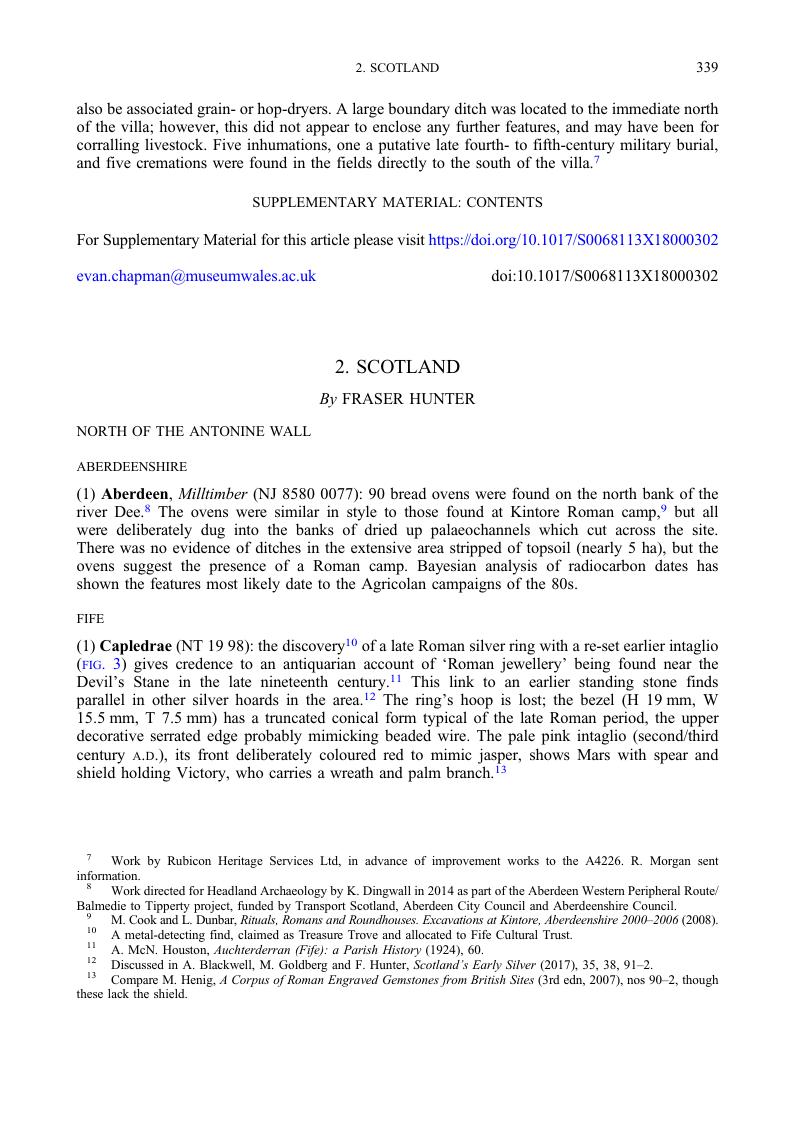Article contents
2. SCOTLAND
Published online by Cambridge University Press: 13 September 2018
Abstract

- Type
- Roman Britain in 2017
- Information
- Copyright
- Copyright © The Author(s) 2018. Published by The Society for the Promotion of Roman Studies
References
8 Work directed for Headland Archaeology by K. Dingwall in 2014 as part of the Aberdeen Western Peripheral Route/Balmedie to Tipperty project, funded by Transport Scotland, Aberdeen City Council and Aberdeenshire Council.
9 M. Cook and L. Dunbar, Rituals, Romans and Roundhouses. Excavations at Kintore, Aberdeenshire 2000–2006 (2008).
10 A metal-detecting find, claimed as Treasure Trove and allocated to Fife Cultural Trust.
11 A. McN. Houston, Auchterderran (Fife): a Parish History (1924), 60.
12 Discussed in A. Blackwell, M. Goldberg and F. Hunter, Scotland's Early Silver (2017), 35, 38, 91–2.
13 Compare Henig, M., A Corpus of Roman Engraved Gemstones from British Sites (3rd edn, 2007), nos 90–2Google Scholar, though these lack the shield.
14 By J. Reid for the Trimontium Trust.
15 D. Cowley in F. Hunter and L. Keppie (eds), A Roman Frontier Post and its People: Newstead 1911–2011 (2012), 44.
16 As linear ditches known from cropmarks might suggest.
17 H.E.M. Cool in P. Booth et al., The Late Roman Cemetery at Lankhills, Winchester. Excavations 2000–2005 (2010), 290–1.
18 Now in Dumfries Museum. For the site, see R.H. Jones, Roman Camps in Scotland (2011), 251–2.
19 Claimed as Treasure Trove, and now in the Stewartry Museum. A road has long been sought in this area, heading west from the known fortlet at Gatehouse-of-Fleet, and likely field traces have been recorded east of the findspot. The discovery of a Roman fortlet on the other side of the estuary of Wigtown Bay, at Kirwaugh (Britannia 42 (2011), 335–6Google Scholar), suggests the traditional fording site at Creetown was used, as this led to near the mouth of the river Bladnoch.
- 1
- Cited by




